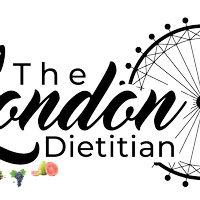You’ve been feeling tired recently, urinating more often than usual and a recent cut is taking longer to heal than usual. You go to your GP who takes a blood test and your blood sugars are very high. You are diagnosed with Type 2 Diabetes and want to make lifestyle changes initially before commencing medication. So, what do you do?
First, let’s get an understanding as to what diabetes actually is. Diabetes UK reports that there are approximately 3.2 million people living in the UK with a diagnosis of diabetes, and an estimated 630,000 people who are unaware that they have diabetes. It is expected that 4.6 million people will have diabetes by 2030, with 90% of those being diagnosed with type 2 diabetes. Diabetes is a condition that can be effectively managed in combination with diet, activity, lifestyle and medication modifications with people leading long, happy and healthy lives. However, if left unmanaged, it can cause serious health problems in the future such a blindness, kidney failure, increased risk of heart disease and lower limb amputations.
There are two main types of diabetes. Type 1 is the result of an autoimmune attack in which the beta cells of your pancreas are attacked by the immune system, leading to their destruction and so your pancreas can no longer produce any insulin. Therefore, people diagnosed with it need lifelong insulin injections. In contrast, patients with type 2 diabetes will have functioning beta cells but these cells are overworked to the point that they can no longer produce enough insulin. Additionally, there is a degree of insulin resistance whereby even when the pancreas is producing sufficient insulin, the cells in our body are unable to recognise the insulin. This then drives the pancreas to try and make more insulin, in essence, overcompensating and leading to it being overworked. This term is called ‘insulin resistance’. Type 2 diabetes is believed to develop due to a myriad of factor such as genetic predisposition, diet, physical activity levels, stress levels and sleep. The good news is that with type 2 diabetes, lifestyle and dietary changes can help manage blood sugar and in some cases, even reverse the diabetes.
So, what component of food is primarily responsible for raising blood sugars? Whenever you eat carbohydrate (think rice/pasta/bread/potato/noodles/anything made from flour or sugar), your body breaks it down into glucose in order for it to be used as energy. The pancreas then releases insulin which acts as the key to the door to allow the cells to take in glucose. With type 2 diabetes, due to the defects listed above, the glucose is unable to enter the cell and stays in the bloodstream.
So, what are my to tips to help you manage your diabetes?
Tip #1- Regular eating pattern
Erratic eating patterns can cause greater swings in your blood sugar, making it more likely for you to feel the negative effects of high blood sugars in the short term (irritability, lack of energy) and in the long-term (effects listed in paragraph two). Ultimately, you want your blood sugars to be stable and so having a regular meal pattern will help to achieve this stability.
Tip #2- Eating the protein portion of your meal first
In recent years, research has shown that have the protein component of you meals first can help stunt the blood glucose spike that comes after eating. This may be due in part to the role that protein has in helping the pancreas produce more insulin. Protein sources include meat, poultry, dairy, eggs, tofu, soy, quorn, beans and pulses.
Tip #3- Switch to non-sugar soft drinks
The sugar in soft drinks is very easily absorbed and so will cause a rapid spike in your blood sugar. Opt for soft drinks that have been sweetened with sweeteners as these will not cause an increase in your blood sugar. This is because the sweetener cannot be absorbed by our body but we can still taste it. Win-win!
Tip #4- Opt for wholegrain carbs
Carbohydrates are an important part of a healthy, well-balanced diet as the broken down constituent (glucose) is our body’s preferred source of fuel, in addition to carbs being an excellent source of fibre. However, when you have diabetes, it is important to be aware of the type of carbs you are eating; white, refined carbs are stripped of their fibre meaning that they are absorbed much more quickly. The fibre also helps to promote insulin secretion and improve insulin sensitivity. In contrast, wholegrain carbs are intact which means that the glucose is released much more slowly over time, therefore keeping the blood sugar stable and avoiding spikes.
Tip #5- Portion control
Not only is the type of carbohydrate important, but portion size of your carbs also plays an important role. Even if you are opting for the wholegrain version, it will still be the overall load of the carbs that will lead to a spike in blood sugar It is recommended that you aim for no more than ¼ of your plate to be a carb with the bulk of your meal consisting of protein and vegetables.
And there you have my top 5 tips! If you have recently been diagnosed with type 2 diabetes and you are feeling overwhelmed, or perhaps you have had this condition for some time but have been unsure on how to manage it, then book yourself in for a free discovery call to find out how I can help you.

